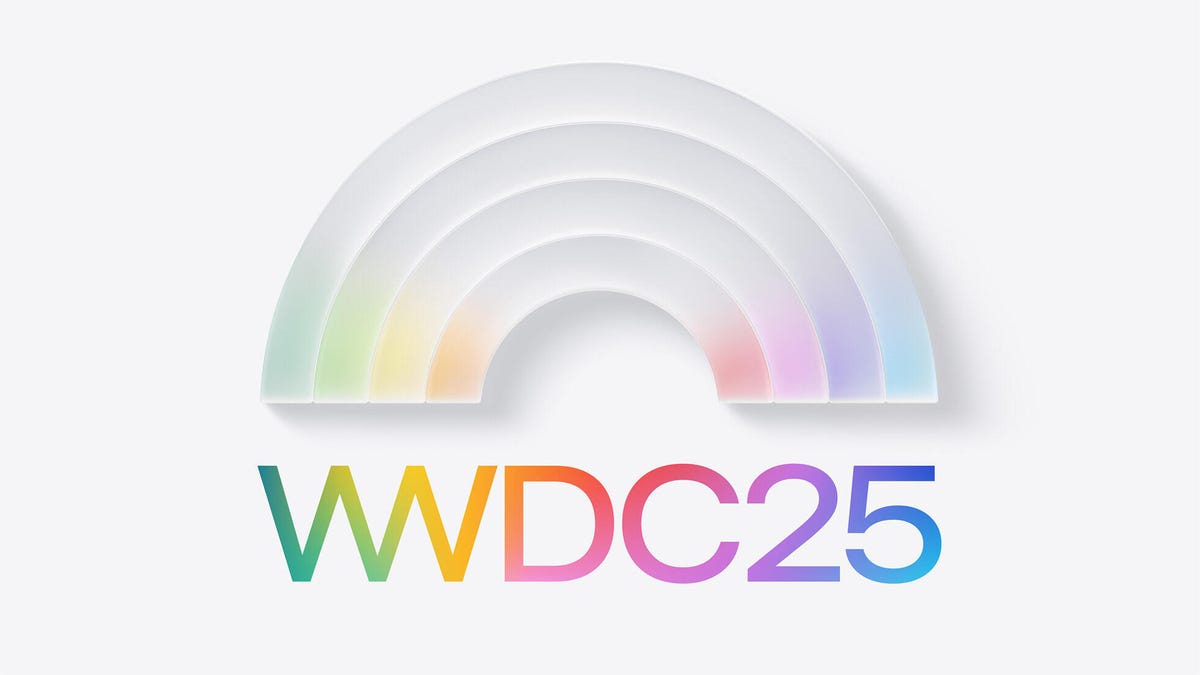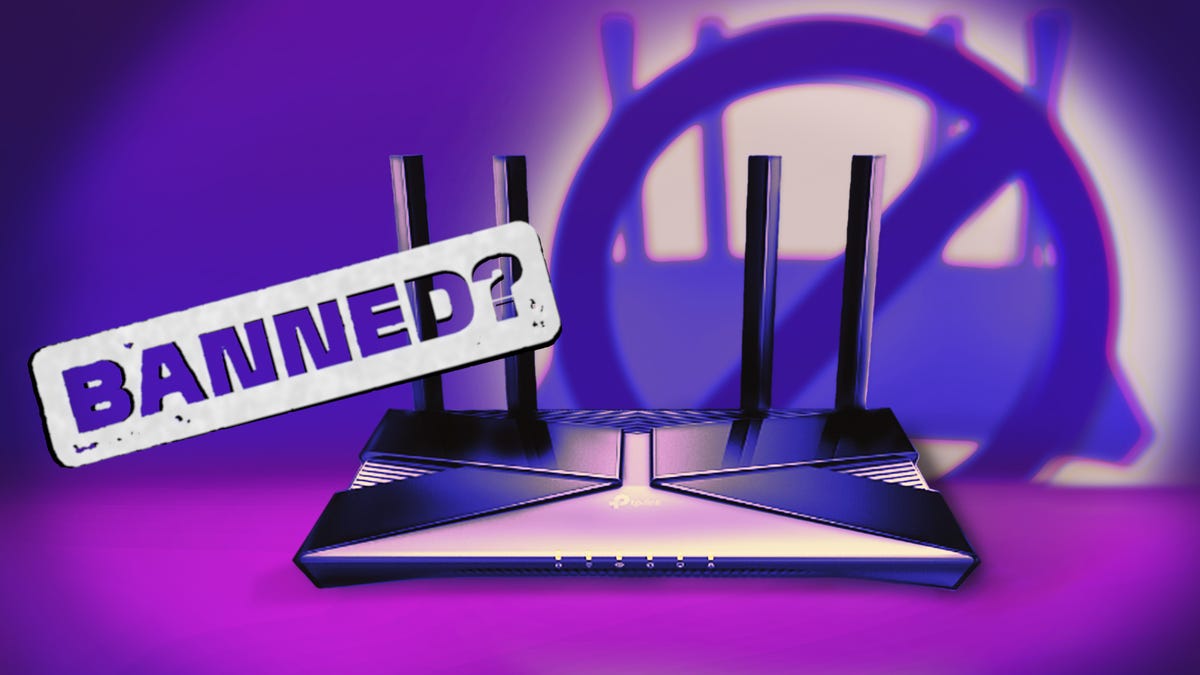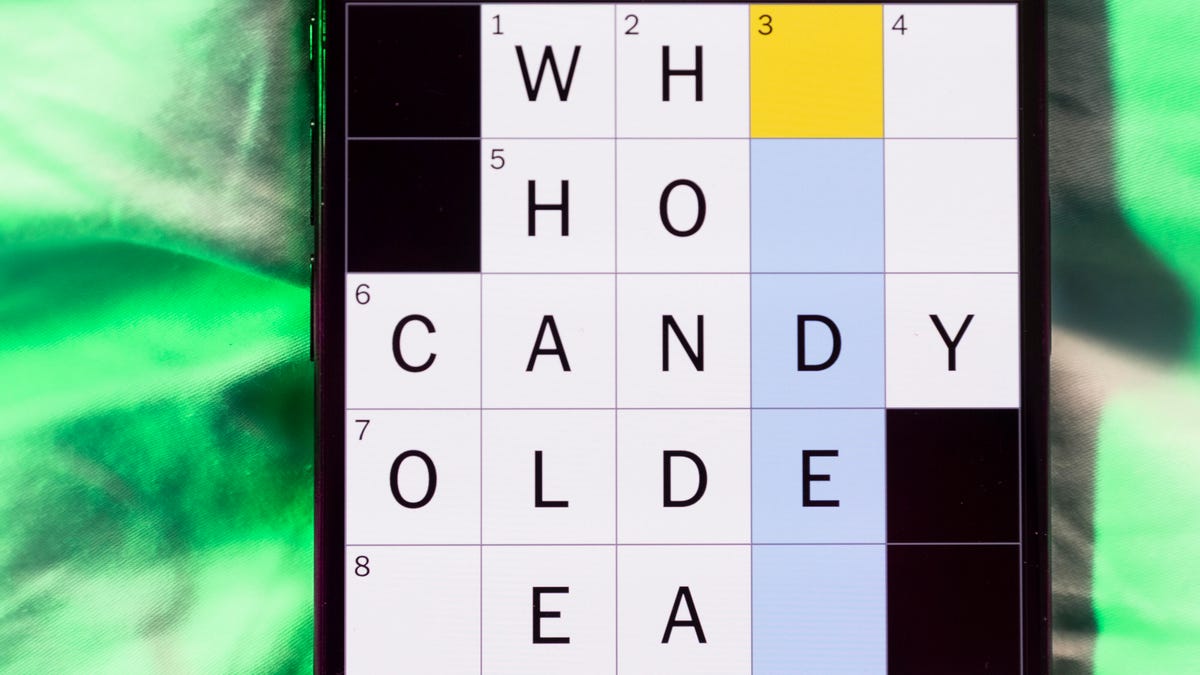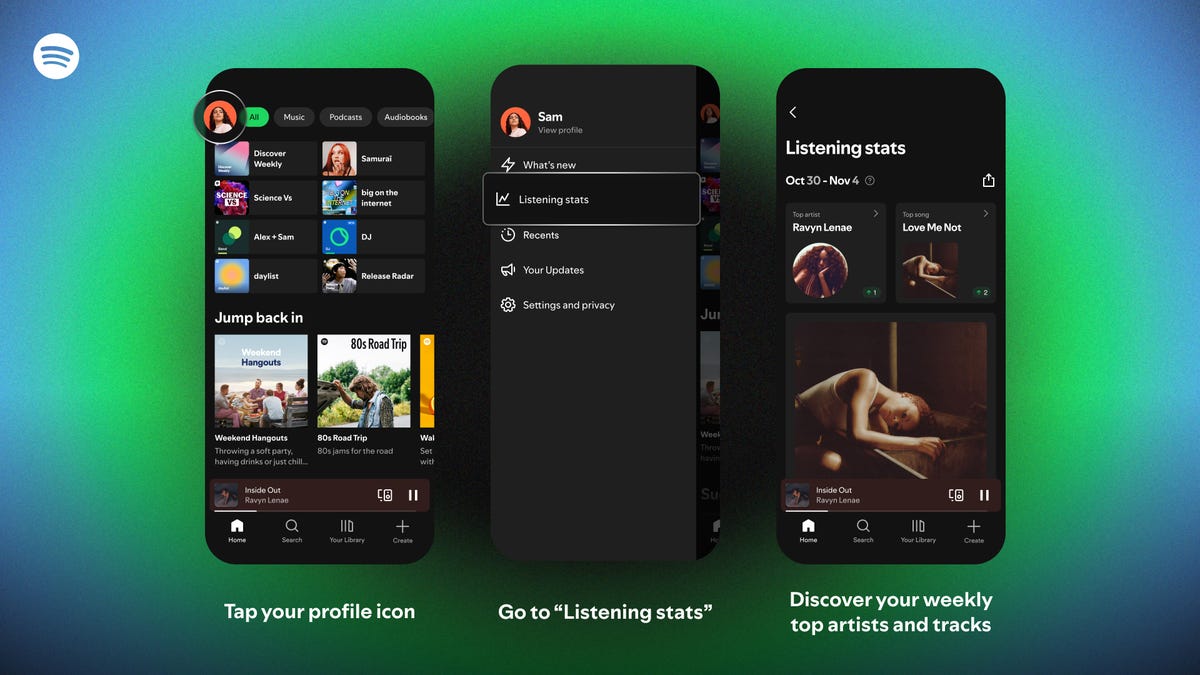Technologies
Apple WWDC 2025 Expectations: Updates to OS Design, Gaming, Health — and Maybe a New HomePod, Too
In a year full of AI, how will Apple follow up its past Vision Pro and Apple Intelligence debuts?

The Vision Pro in 2023. Apple Intelligence in 2024. What’s coming in 2025? At its last two WWDC events, Apple launched itself into new computing territories, jumping into both AR/VR and generative AI. But with both the Vision Pro and Apple Intelligence having faced slow and heavily criticized starts, the big message at this year’s WWDC, happening June 9, doesn’t seem very clear at all.
The pressure is on Apple to show interesting progress into future categories, but this year it might instead focus on operating system redesigns and gradual improvements to what the company has already been trying to achieve.
WWDC — the company’s developer conference — is usually a showcase for Apple’s future-forward ideas. It’s also where the company discusses its dev tools, as you’d expect. And it’s where previews of all the new OS versions are revealed, giving an early look at what’s coming to the iPhone, iPad, Mac and other Apple devices.
It’s possible Apple will get into new product territories once again with the reveal of a new home device — a display-enabled HomePod — but the biggest rumors so far suggest a new cross-OS redesign and renaming that could be Apple’s way of deflecting some attention away from not having big new AI features to show off.
OS by year: Will it be iOS 26?
Recent reports from Bloomberg’s often-correct Mark Gurman say Apple is going to ditch the existing numbered OS convention it’s used for years and instead go with another approach to naming: labeling all annual OSes by year number. Instead of iOS 19, we’ll have iOS 26. And iPadOS 26, and MacOS 26, and WatchOS 26, TVOS 26, VisionOS 26. Samsung made a similar move in 2020, jumping from the Galaxy S10 in 2019 to the Galaxy S20 in 2020.
Apple’s numbering has felt pretty disjointed as the numbers have gone ever-higher across multiple device categories. A yearly number would at least help people know if they’re on the current version.
Glass as the new look
The WWDC invites, featuring a hazy transparent ring, hint at a reported redesign of all the company’s software to a new «glass» look. Bloomberg’s Gurman reported on a large incoming cross-OS design shift, calling it a dramatic redesign and one of the biggest Apple’s done in years. The design may mirror the Vision Pro’s VisionOS feel, which has lots of frosted glass panes, layers of transparency and circular app icons. Front Page Tech’s Jon Prosser showed a preview of the expected design based on information from his sources, and it definitely looks VisionOS-esque.
Beyond a coat of paint, will the OSes start to feel more similar in function too? I’m particularly curious about how iPadOS and MacOS start to close in on each other even more. Apple’s iPad has slowly inched toward acting like a computer, with features like Stage Manager for multitasking, and it’s felt inevitable that the tablet line would eventually provide a comparable experience to the MacBook.
WatchOS should get Apple Intelligence, and the Health app may be part of it
One of the devices that’s missed out on Apple Intelligence so far has been the Apple Watch, and that should be changing soon. Apple is expected to put more AI on the next Watch OS, which could help with message summaries, translation and maybe even composing messages. It could also bring overdue health and fitness upgrades. Reports say Apple could be working on adding generative AI insights to its Health app data and even using AI as a medical service, with a launch target of 2026. Health could possibly get a paid subscription tier, similar to Fitness and what many of Apple’s current services are adding. This could be like what Google is doing with Wear OS, which has long used Fitbit Premium as a health subscription (a broader Gemini rollout is on the way too).
I like AI coaching and insights on a watch, but I don’t like subscriptions. We’ll see what happens, and if Apple gets into any of these future plans at this WWDC.
Battery boosts
Another recent report (again, Gurman) says AI will help Apple improve battery life on its devices. How many devices? The iPhone, but hopefully the Apple Watch, too — these are the products in the lineup that I find I need to charge more than I’d like. For me, at least, iPads and Macs are mostly fine on battery life as is, but I’ll never refuse longer battery life for anything.
Apple has made gradual boosts to its battery features over time, but maybe there will be more intelligently applied power modes this time.
Game news?
Apple may be pushing the importance of games again, just as the Nintendo Switch 2 debuts. Bloomberg reports that the company could release a new app to act as a hub for games and game services including Apple Arcade, becoming an overdue overhaul of Game Center.
A number of game controller accessories, like Backbone, already have app hubs that function as game launchers, but Apple has never done much to help organize games on its devices in a way that feels more like what you find on a console. A new app seems like a good fit for those types of controllers, too.
Apple just acquired its first game studio: RAC7, the developers of hit Apple Arcade game Sneaky Sasquatch.
Apple could also have VR gaming news, if older reports come true: PlayStation VR 2 controllers have been expected to work with Vision Pro headsets, in a push to expand gaming on Apple’s VR/AR headset. Maybe that’ll be part of a push to get more developers onboard, as Apple could be readying a less expensive version of the Vision Pro in the next year. Right now the headset can’t compete with Meta’s more affordable Quest headsets in the gaming department.
AI: Live translation, and maybe Vision camera advancements
Apple opened up camera access to enterprise developers last year, and now it’s time for AI tools to emerge for everyone else — tools that could help describe what you’re seeing, or help you remember things too. Apple has already added assistive support for some camera-enabled functions on the Vision Pro and other products, suggesting more to come.
Though Apple’s WWDC keynote presentation isn’t expected to include many announcements of AI strides, the company still needs to compete with Google, Open AI, Perplexity and many others who are making such strides. Reports say live translation will come to some AirPods models, which would mirror what Google and Meta have been doing on glasses and earbuds and on phones.
The biggest VisionOS move I’d expect to see is some introduction of camera-aware AI. Apple Intelligence debuted on Apple’s VR/AR spatial computer headset earlier this year, but none of the AI can take advantage of the system’s cameras to «see» what you’re seeing. At least not yet. Google’s use of Gemini to access the cameras on upcoming headsets and glasses, and Meta’s support of camera access for Quest developers (and its expanding AI tools on Ray-Bans), suggest Apple needs to move this way now to begin paving a way for camera-aware AI to work on future headsets and eventually glasses.
A new HomePod-slash-iPad?
There could be a new product emerging at WWDC: a look at a long-expected screen-enabled HomePod that may be part of a bigger push into smarter smart home tech. Reports suggest it’ll be something like a HomePod now — speaker-enabled, with an array of mics — but with a touchscreen. Would it be a screen big enough to act as a photo frame, or something more like a control panel? Where would this thing live, exactly? And what would it cost? Originally, reports of this device even suggested a robotic arm that would allow the screen to follow your face, but those plans seem to be off the table for now.
Of all the wild-card product ideas Apple could announce at this show, this seems the most likely.
We’ll know more soon
WWDC is happening June 9, with the keynote video presentation streaming at 10 a.m. Pacific. We’ll be there at Apple Park, too, covering it in person. We’ll know more about how all this software could be hinting at new products, and get a check-in on where exactly Apple is with its AI strategies. And maybe we’ll get a bit of product news, too — you never know.
Technologies
Controversy Brews: US Government Targets Banning Top Wi-Fi Router
Federal departments and agencies are joining forces in an effort to ban TP-Link routers due to concerns about national security risks.

TP-Link routers might not be available for much longer in the US, according to a Washington Post report last week. A potential ban is looking increasingly likely, as more than half a dozen federal departments and agencies back the proposal,
The news first broke in December of last year, when The Wall Street Journal reported that investigators at the Departments of Commerce, Defense and Justice had all opened probes into the company due to national security risks stemming from its ties to China. Since then, news on the TP-Link front has been relatively quiet.
Now, the proposal has gained interagency approval.
Read more: I Asked 4 Cybersecurity Experts If They Would Still Use a TP-Link Router
Why are plans to ban TP-Link routers being pushed?
«Commerce officials concluded TP-Link Systems products pose a risk because the US-based company’s products handle sensitive American data and because the officials believe it remains subject to jurisdiction or influence by the Chinese government,» the Washington Post reported.
TP-Link’s ties to the Chinese government are only allegations. The company — technically called TP-Link Systems — has strenuously denied to me in the past that it’s a Chinese company.
«As an independent US company, no foreign country or government, including China, has access to or control over the design and production of our products,» a TP-Link spokesperson told CNET.
The history of the TP-Link routers
TP-Link was founded in Shenzhen, China, in 1996 by two brothers, Jeffrey (Jianjun) Chao and Jiaxing Zhao. In October 2024, two months after members of the House Select Committee called for an investigation into TP-Link routers, the company split into two: TP-Link Technologies and TP-Link Systems.
The latter is headquartered in Irvine, California, and has approximately 500 employees in the US and 11,000 in China, according to the Washington Post report. TP-Link Systems is owned by Chao and his wife.
«TP-Link’s unusual degree of vulnerabilities and required compliance with [Chinese] law are in and of themselves disconcerting,» the lawmakers wrote in October 2024. «When combined with the [Chinese] government’s common use of [home office] routers like TP-Link to perpetrate extensive cyberattacks in the United States, it becomes significantly alarming.»
The company has become a dominant force in the US router market since the pandemic. According to the Journal report, it grew from 20% of total router sales in 2019 to around 65% this year. TP-Link disputed these numbers to CNET, and a separate analysis from the IT platform Lansweeper found that 12% of home routers currently used in the US are made by TP-Link. More than 300 internet providers issue TP-Link routers to their customers, according to the Wall Street Journal report.
Why are TP-Link routers being investigated?
Separately, the Department of Justice’s antitrust division is investigating whether TP-Link engaged in predatory pricing tactics by artificially lowering its prices to muscle out competitors.
CNET has several TP-Link models on our lists of the best Wi-Fi routers and will monitor this story closely to see if we need to reevaluate those choices.
«We do not sell products below cost. Our pricing is not only above cost but contributes a healthy profit to the business,» a TP-Link spokesperson told CNET.
The potential ban has been through an interagency review and is currently in the hands of the Department of Commerce. According to the Washington Post report, sources familiar with the details of the ban said the Trump administration’s ongoing negotiations with China have made the chances of a ban less likely in the near future.
«Any concerns the government may have about TP-Link are fully resolvable by a common-sense mix of measures like onshoring development functions, investing in cybersecurity, and being transparent,» the spokesperson said. «TP-Link will continue to work with the US Department of Commerce to ensure we understand and can respond to any concerns the government has.»
Don’t miss any of our unbiased tech content and lab-based reviews. Add CNET as a preferred Google source.
How worried should you be about your TP-Link router?
I wrote a few months ago that I wasn’t in any rush to replace my own TP-Link router, and that’s essentially how I still feel today.
When the news first broke last December, I asked four cybersecurity experts whether they would still use a TP-Link router. One gave a strong «no.» Another said there is «risk for a consumer.» And two declined to answer the question directly.
Itay Cohen was one of the authors of a 2023 report that identified a firmware implant in TP-Link routers linked to a Chinese state-sponsored hacking group. He told me in a previous interview that similar implants have been found on other router brands manufactured all over the world.
«I don’t think there’s enough public evidence to support avoiding routers from China outright,» Cohen said. «The vulnerabilities and risks associated with routers are largely systemic and apply to a wide range of brands, including those manufactured in the US.»
I heard a version of that from every cybersecurity expert I spoke with. TP-Link has security flaws, but so do all routers, and I couldn’t point to any that showed collaboration with the Chinese government specifically.
«We’ve analyzed an astonishing amount of TP-Link firmware. We find stuff, but we find stuff in everything,» said Thomas Pace, CEO of cybersecurity firm NetRise and former security contractor for the Department of Energy.
That said, it’s entirely possible that the government is aware of vulnerabilities that the public is not.
For now, I’m still comfortable using a TP-Link router knowing I follow some basic best practices for network security, but my risk tolerance may be higher than it is for others.
How to protect your network if you have a TP-Link router
If you’re one of the millions of Americans who uses a TP-Link router, the news of a potential ban might be unnerving.
A Microsoft report from last year found that TP-Link routers have been used in «password spray attacks» since August 2023, which typically occur when the router is using a default password.
Here’s what you can do to protect yourself right now:
Update your login credentials. A shocking amount of router attacks occur because the user never changed the default login credentials set by the router manufacturer. Most routers have an app that lets you update your login credentials, but you can also type your router’s IP address into a URL. These credentials are different from your Wi-Fi name and password, which should also be changed every six months or so. As always with passwords, avoid common words and character combinations, longer passwords are better and don’t reuse passwords from other accounts.
Use a VPN. If you’re worried about prying eyes from the Chinese government or anyone else, the single best thing you can do to ensure your connection remains private is to use a quality VPN. Privacy-minded folks should look for advanced features like obfuscation, Tor over VPN and a double VPN, which uses a second VPN server for an added layer of encryption. You can even install a VPN on your router directly so that all your traffic is encrypted automatically.
Turn on the firewall and Wi-Fi encryption. These are typically on by default, but now is a good time to make sure they’re activated. This will make it harder for hackers to access the data sent between your router and the devices that connect to it. You can also find these settings by logging into your router from its app or website.
Consider buying a new router. I always recommend buying your own router instead of renting one from your internet service provider. This is mostly a cost-saving measure, but if your ISP uses TP-Link equipment, now might be a good time to switch to another brand. The main thing to look for is WPA3 certification — the most up-to-date security protocol for routers.
Update your firmware. TP-Link’s spokesperson told me last year that customers should regularly check for firmware updates to keep their router secure. «To do this, customers with TP-Link Cloud accounts may simply click the ‘Check for Updates’ button in their product’s firmware menu,» the spokesperson said. «All other customers can find the latest firmware on their product’s Downloads page on TP-Link.com.»
Technologies
Today’s NYT Mini Crossword Answers for Saturday, Nov. 8
Here are the answers for The New York Times Mini Crossword for Nov. 8.

Looking for the most recent Mini Crossword answer? Click here for today’s Mini Crossword hints, as well as our daily answers and hints for The New York Times Wordle, Strands, Connections and Connections: Sports Edition puzzles.
Need some help with today’s Mini Crossword? It’s the long Saturday one, so you might need assistance. Read on for the answers. And if you could use some hints and guidance for daily solving, check out our Mini Crossword tips.
If you’re looking for today’s Wordle, Connections, Connections: Sports Edition and Strands answers, you can visit CNET’s NYT puzzle hints page.
Read more: Tips and Tricks for Solving The New York Times Mini Crossword
Let’s get to those Mini Crossword clues and answers.
Mini across clues and answers
1A clue: Uber alternative
Answer: CAB
4A clue: Red-headed character in the «Scooby-Doo» franchise
Answer: DAPHNE
7A clue: Not arrive on time
Answer: RUNLATE
8A clue: Label on a green U.S.D.A. sticker
Answer: ORGANIC
9A clue: Prestigious engineering school in Pasadena
Answer: CALTECH
10A clue: Prepares to be knighted
Answer: KNEELS
11A clue: Parts of a city grid: Abbr.
Answer: STS
Mini down clues and answers
1D clue: Fashion brand with an interlocking «C» logo
Answer: CHANEL
2D clue: Silly behaviors
Answer: ANTICS
3D clue: Tree with smooth gray bark
Answer: BEECH
4D clue: Kevin ___, 15-time N.B.A. All-Star
Answer: DURANT
5D clue: They’re measured in degrees
Answer: ANGLES
6D clue: Division of the earth’s crust
Answer: PLATE
7D clue: Ice, in bartending lingo
Answer: ROCKS
Technologies
Spotify Brings Wrapped Energy Year-Round With Friend-Sharing Stats
The music service introduced new ways for music nerds to share their listening habits with friends.

It can be a long wait for Spotify Wrapped, the end-of-year promotion that allows Spotify users to view and share their listening habits. Now, users can keep an eye on those stats daily, plus share their listening habits with friends.
You can view your Spotify usage statistics every 24 hours and share your updates via social media services, such as Instagram Notes or Spotify Messages. The new share icon gives you access to eight different services where you can post your stats.
Every week, you’ll get updates on your top artists and songs from the past month, and Spotify will recommend new playlists. The app also gives you a «special highlight» based on a specific artist or song.
To access your personal musical data, click on your profile in the top left corner of the app and scroll down to «listening stats.»
Don’t miss any of our unbiased tech content and lab-based reviews. Add CNET as a preferred Google source.
The new features are somewhat similar to Spotify Wrapped, the service’s annual end-of-year review of users’ listening habits, which is designed to be shared. Every year, Spotify adds extra details to Wrapped, such as assigning users a listening personality or a city that supposedly reflects their music tastes. It’s been the most popular way for Spotify users to view and share their music listening in the past. A number of third-party services do the same thing, including Volt.fm.
Read more: Best Music Streaming Services
Spotify is the world’s largest music streaming service, offering 100 million tracks and serving more than 713 million users. In addition to its $12-per-month subscription service, Spotify also offers a free, ad-supported option.
-

 Technologies3 года ago
Technologies3 года agoTech Companies Need to Be Held Accountable for Security, Experts Say
-

 Technologies3 года ago
Technologies3 года agoBest Handheld Game Console in 2023
-

 Technologies3 года ago
Technologies3 года agoTighten Up Your VR Game With the Best Head Straps for Quest 2
-

 Technologies4 года ago
Technologies4 года agoVerum, Wickr and Threema: next generation secured messengers
-

 Technologies4 года ago
Technologies4 года agoBlack Friday 2021: The best deals on TVs, headphones, kitchenware, and more
-

 Technologies4 года ago
Technologies4 года agoGoogle to require vaccinations as Silicon Valley rethinks return-to-office policies
-

 Technologies4 года ago
Technologies4 года agoOlivia Harlan Dekker for Verum Messenger
-

 Technologies4 года ago
Technologies4 года agoiPhone 13 event: How to watch Apple’s big announcement tomorrow
